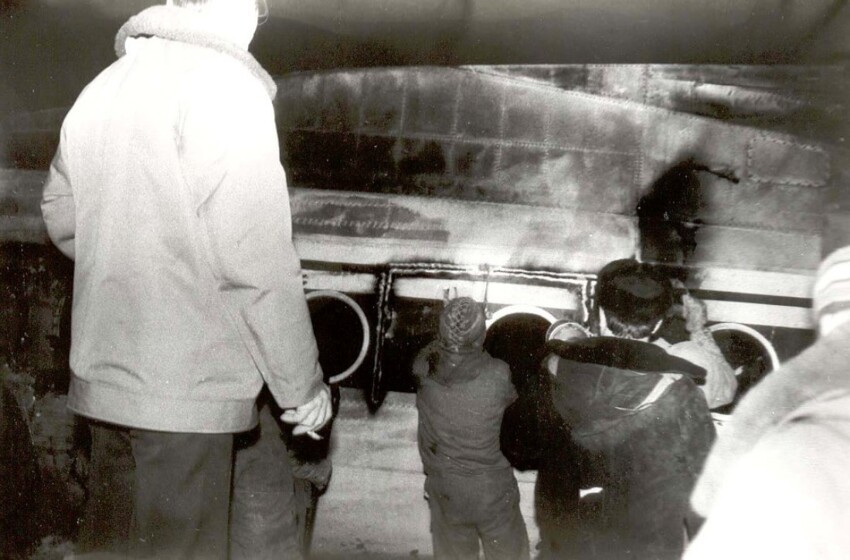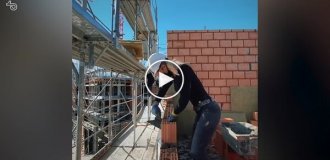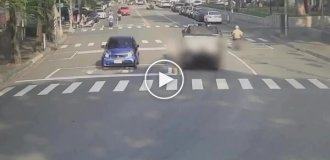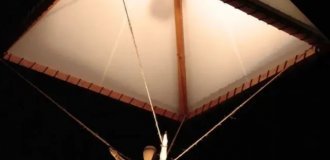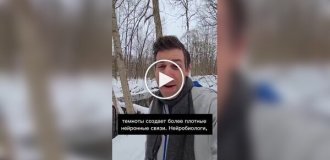Thirty-five years ago, two pilots had an argument in the air. The result of the bet was a plane crash and 69 dead (11 photos)
Witnesses of the tragedy that occurred in the autumn of 1986 in Kurumoch airport in the city of Kuibyshev (now Samara), then they told reporters that the plane was landing too fast. Experts investigating the disaster confirmed this observation. However, neither witnesses nor experts until the stage of decoding voice recorders did not know that the Tu-134A of the Grozny squadron of Aeroflot at the moment on landing, the flight deck curtains were completely closed. 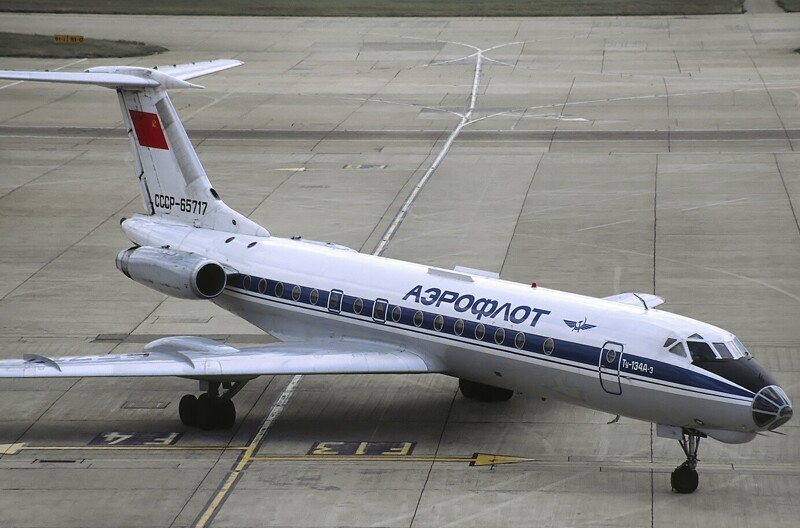
The pilots landed blindly, and it was not at all forced decision, but a flagrant violation of flight safety. As a result collusion of crew members killed 69 people, and unique pictures, made in the first minutes after the incident, help to restore a picture of the tragic events of 35 years ago.
Prerequisites
Now all air passengers are accustomed to direct flights, not requiring intermediate landings. Even for extra long suitable types of aircraft are already being flown. Another 30 years back, not to mention the first post-war decades, the situation was the opposite, especially when it came to "unpopular" destinations. By making one or more additional landings between the end points of its route, the airline received not only the ability to refuel an aircraft, whose maximum the range did not correspond to the flight in progress. Intermediate airports also made it possible to expand the geography of flights, which in turn increased the number of potential passengers.
For example, you can take the ultra-long flight of the Soviet Aeroflot between Moscow and Lima, the capital of Peru. In the early 1980s his served the Il-62M airliner, the maximum flight range of which exceeded 10 thousand km. The aircraft was making intermediate landings. first in Luxembourg, then, before crossing the Atlantic, in Irish Shannon, after which he already went to Havana and Managua, the capitals friendly Cuba and Nicaragua, and only then finally landed in Lima. It is not surprising that such flights turned into many hours epic. 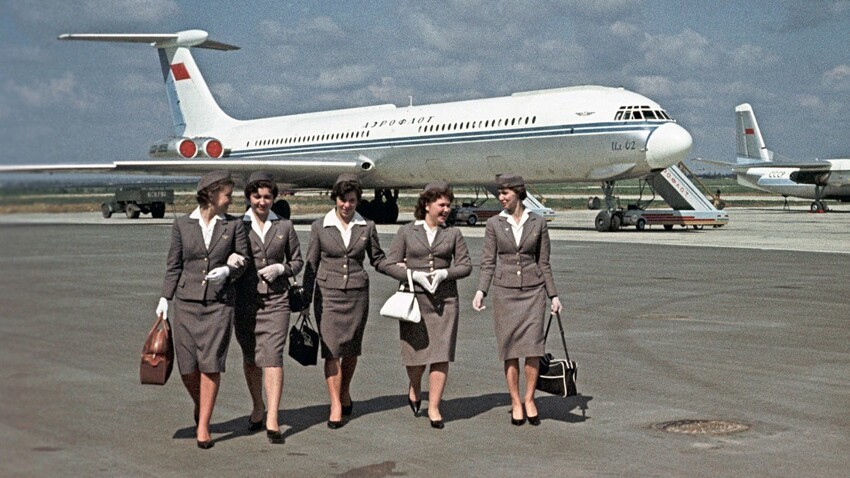
This practice was also used on domestic flights. companies. The ill-fated flight 6502 connected Sverdlovsk (now Yekaterinburg) and Grozny, but at the same time made an intermediate landing in the Volga Kuibyshev, now renamed Samara. Route served united squadron, based in the capital of the Chechen-Ingush Autonomous Soviet Socialist Republic, with using the Tu-134A aircraft, this workhorse of the Soviet short range aviation.
The crashed copy in Kurumoch was released in 1979 and for 7 years he managed to fly more than 16 thousand hours. Operation was carried out quite active, but the old plane could not be called. IN Sverdlovsk, his salon was filled to capacity. Boarded 87 passengers (including 14 children). The crew consisted of 7 people: commander aircraft (PIC), co-pilot, navigator, flight engineer and three flight attendants. 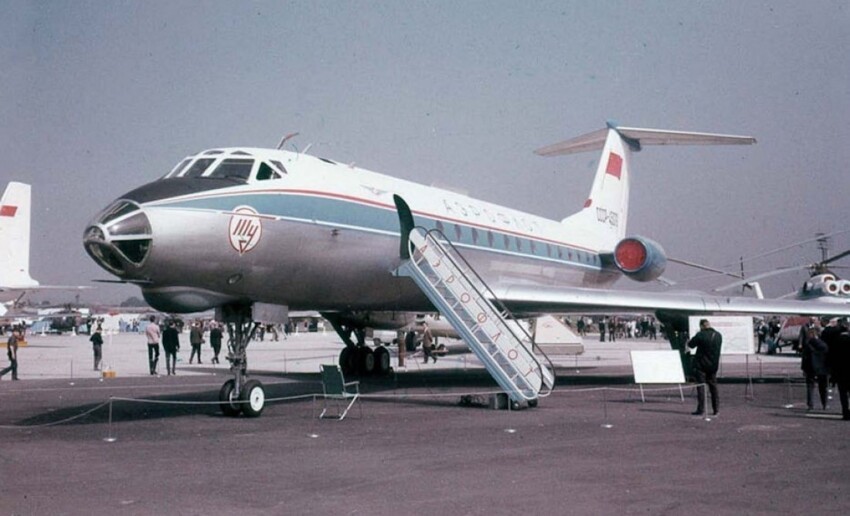
The key decision was made by both pilots back in departure airport. During pre-flight preparation in Sverdlovsk ship commander Alexander Klyuev and co-pilot Gennady Zhirnov they argued that the FAC would be able to land the Tu-134 in Kuibyshev blindly, focusing only on instrument readings. Actually this kind skills are sometimes useful, for example, when landing in difficult weather conditions. To develop them, training flights are carried out with instructor or exercises on the simulator. However, a "blind" landing “on a bet”, with the risk to the lives of dozens behind your back and unsuspecting passengers have certainly written a new bloody page in the history of air crashes.
The Grozny plane took off from Sverdlovsk at 14:33 Moscow time. An hour later, the Tu-134 began to decline. Parallel to cockpit blind flight blind was closed, and the remaining time of the PIC did not had visual ground contact while making an instrument landing. On decision altitude, i.e. the minimum altitude at which the liner could safely abort the landing and go around, Klyuev did not did, but on the contrary, continued calling. 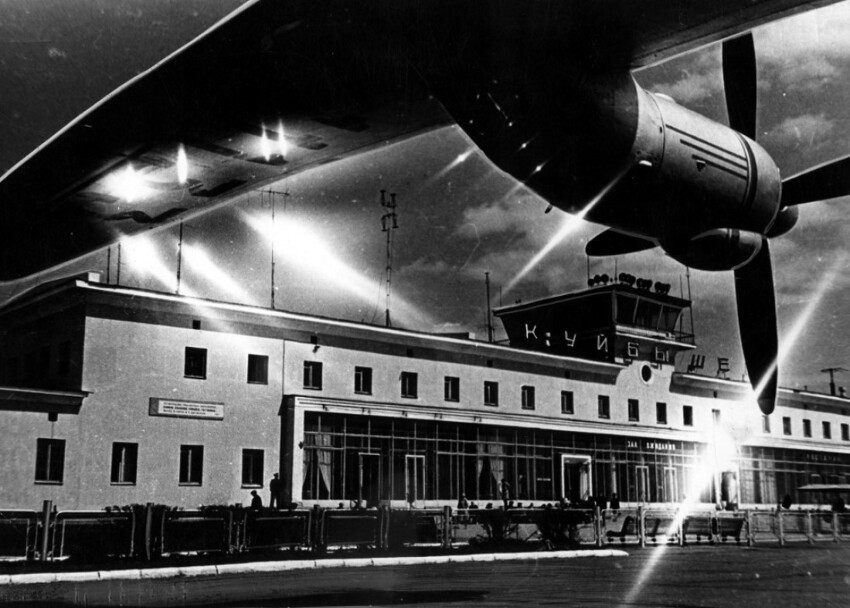
Catastrophe
As further developments of events showed, the commander it really made sense to practice blind landing, but, Certainly not under these conditions. During the call, he made several errors, as a result of which the ship flew up to the end of the runway lanes with horizontal and vertical speeds, significantly exceeding calculatede. At the time of landing, the indicated airspeed was 280 km/ h (instead of the prescribed 268 km/ h), and vertical - 5 m/ s (instead of 3.4 m/s).
A second before landing, Klyuev gave the order to raise the curtain blind flight, perhaps realizing that the landing is abnormal. However, he did not have time to see anything, because the curtain opens more one second. Tu-134 landed hard at 15:50 Moscow time on the runway of the Kuibyshev airport Kurumoch. 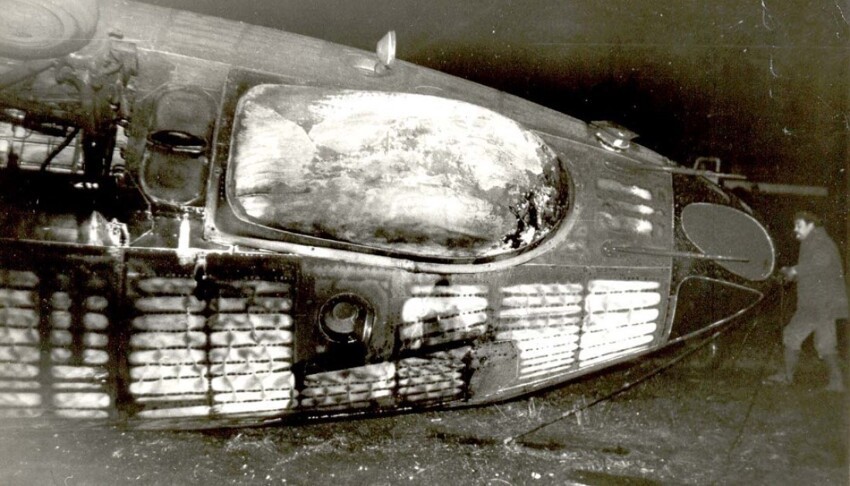
Everything else took a few terrible seconds. Overload during landing was 4.8 units with a destructive index of 3.75. The right chassis collapsed immediately, the left pierced its wing, destroying both it and the fuel tanks in it. At a distance of 78 meters from the point the first touch kerosene ignited. The plane rolled over around its axis and 214 meters from the point of contact was on the roof, on the top of the fuselage. Then there was a turn with the tail forward and a descent from Runway to ground. During the subsequent slide, the Tu-134 continued to burn and collapse. The fuselage finally broke into two parts stopped 528 meters from the point of contact.
It is difficult to imagine what was happening on board at that moment. Most likely, for those few moments that the liner was spinning around all axes, collapsed and burned, few people had time to realize something. How one of the surviving passengers said later, she did not feel anything, just suddenly everything around began to make noise and fall, after which she I saw a large hole nearby, where, without thinking twice, I jumped. 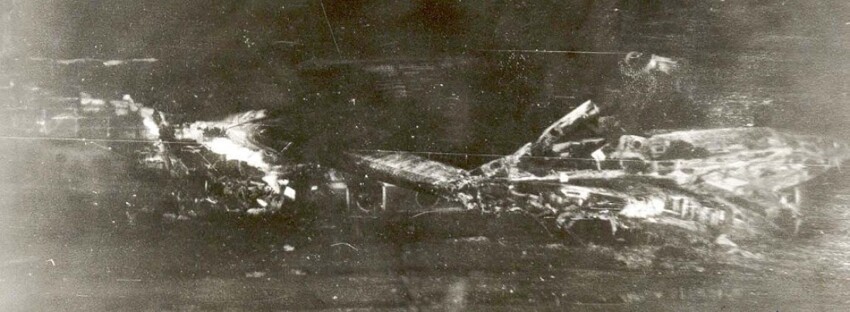
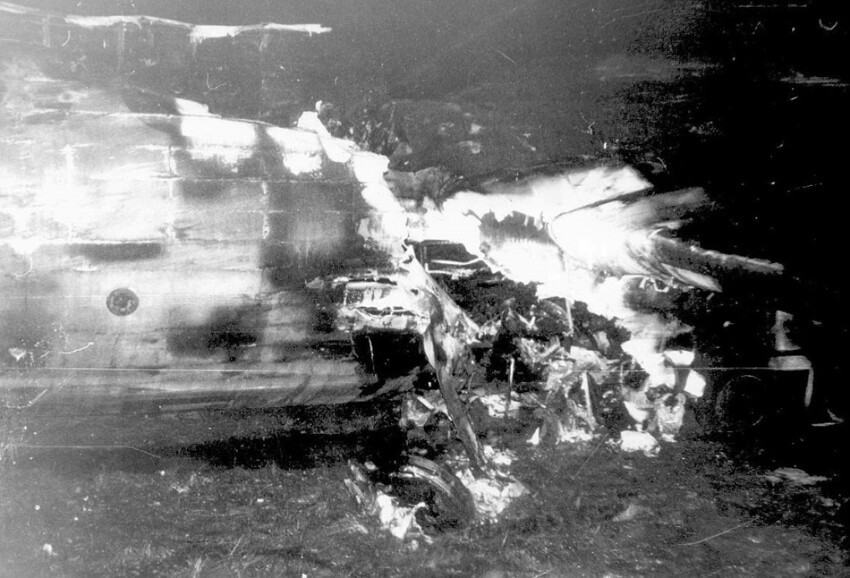
Most of the survivors were just at the fault line fuselage. In order to survive, they had only to unfasten themselves, successfully fall (because the plane was upside down) and leave the wrecked liner. A few more people were able to open escape hatch in the tail of the Tu-134 and leave the board through it. Both pilots survived the crash. However, the second pilot Zhirnov, who took an active part in rescuing passengers and managed to take out several people from the cabin, while receiving a strong poisoning by combustion products (primarily from the plastic of the internal skin that emitted toxic substances) and died in hospital three years later. day.
The immediate cause of death for many of the dead was not burns or any injuries sustained during landing, but just suffocation from poisoning by combustion products. People in chaos around, they simply did not have time to understand what was happening, what to do, how escape, lost consciousness and suffocated. But from three flight attendants there was practically nothing left: under the compartment where they were, oxygen cylinders were stored, which exploded immediately after the start fire.
In total, as a result of the crash landing of Flight 6502 69 people died (according to other sources - 70), of which from 6 to 11 died in hospitals. 25 passengers survived. 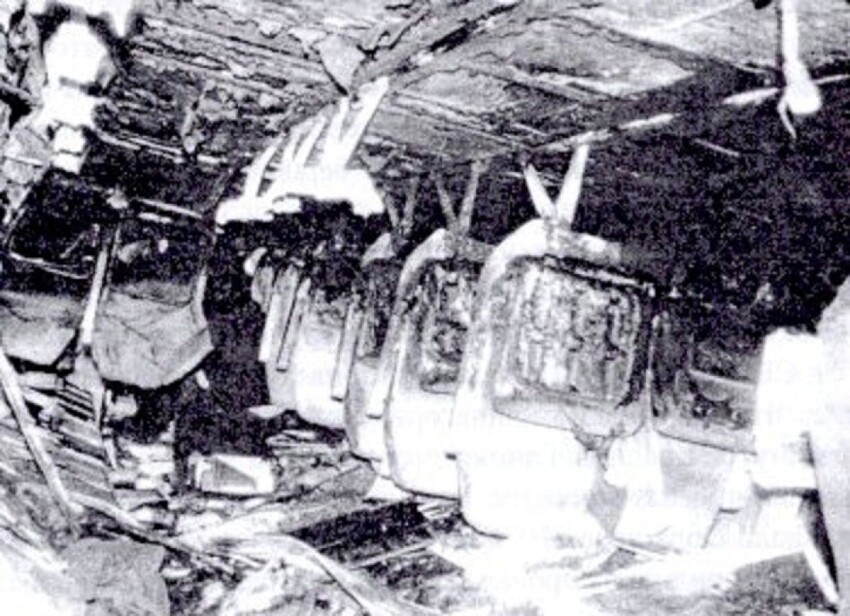
Investigation
As already mentioned, the Tu-134 touched the Kurumoch runway at 15:50 Moscow time. In Kuibyshev at that time it was an hour more, 16:50. Rescuers from the airport fire department were at the scene of the tragedy already through a minute and a half and immediately began to put out the fire and take out of the cabin surviving passengers. At 16:59 to one of the city fire departments received a signal about the need for additional forces, however, in fact, no help was needed. At 17:44 all fires were liquidated, but the hard work was just beginning.
“We could not contemplate the terrible picture without a shudder. Many of the sight of corpses and the sickening smell of burnt meat turned out. At the same time, there was such a suffocating smell from the burnt skin in the cabin that it was possible to work only in a gas mask. As I dived into the sooty the fracture of the hull, I immediately saw the dead hanging over my head people wearing seat belts. After all, the plane is in the process of falling turned over, and all the seats with passengers as a result turned out to be on the ceiling. Many of the corpses were completely without outerwear, while others were just no shoes. All this was either torn off by a stream of air, or burned flame"
- said Valery Frygin, who worked as an engineer in a fire testing laboratory in 1986. 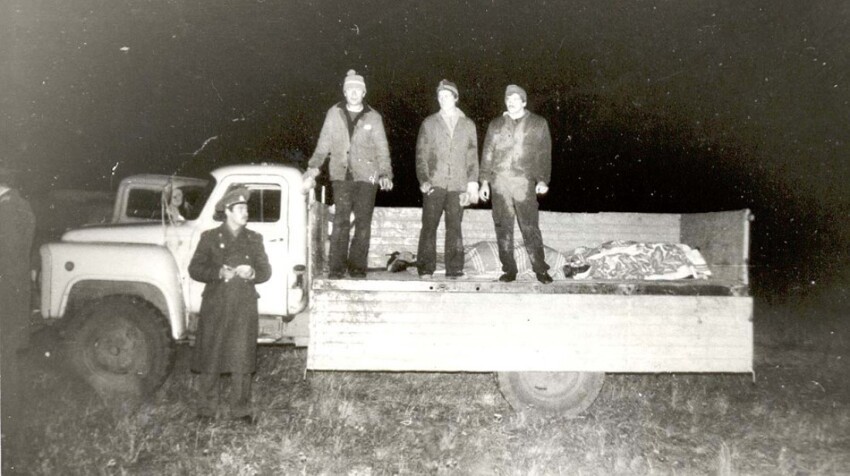
It was Frygin, who took a camera with him, who made several dozen operational photographs of the tragedy. One of the cassettes he managed to save, the very fact of a man-made disaster did not advertised, despite thefalling perestroika and glasnost.
To investigate the causes of the incident, a government commission, whose specialists, after deciphering the testimony of the voice recorder quickly enough, everything became clear. IN The official wording of the expert opinion was as follows:
"cause accidents were a violation by the crew on a preliminary criminal collusion of flight rules in terms of landing approach behind the curtain of the blind flight to an unacceptably low altitude and failure to take measures to go to the second circle, resulting in a rough landing of the aircraft with a higher g-force destructive, destruction of the structure and subsequent fire "
. 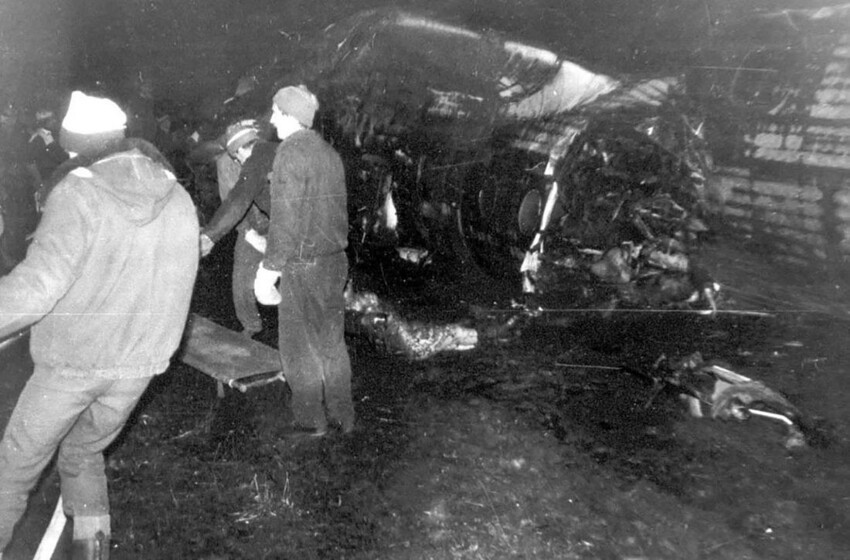
FAC Klyuev, who survived during the hard landing arranged by him on interrogation by the investigator admitted the fact of the dispute, however, at the trial, which took place in closed mode, suddenly changed the testimony, declaring that everything happened due to a fuel leak and failure of one of the engines. What is the pilot expected, it’s not very clear, because the picture of what happened was absolute clear. Klyuev received the maximum possible 15 years, of which, however, only left 6.
Well, certain conclusions were drawn from this case. Pilot and the writer Vasily Ershov said so in his book “Reflections sled dog":
“A fool is a person who is unable to foresee the consequences of their actions. At VLOOKUP [decision height] curtain stuck. The captain and the flight engineer dropped everything and began to open this curtain. The co-pilot, carried away by watching their actions, opened his mouth. The plane landed roughly, fell apart and burned out, but the crew remained alive; they were still running, trying to pull passengers out from under the wreckage.
After that, our curtains are sealed. Fool protection. 